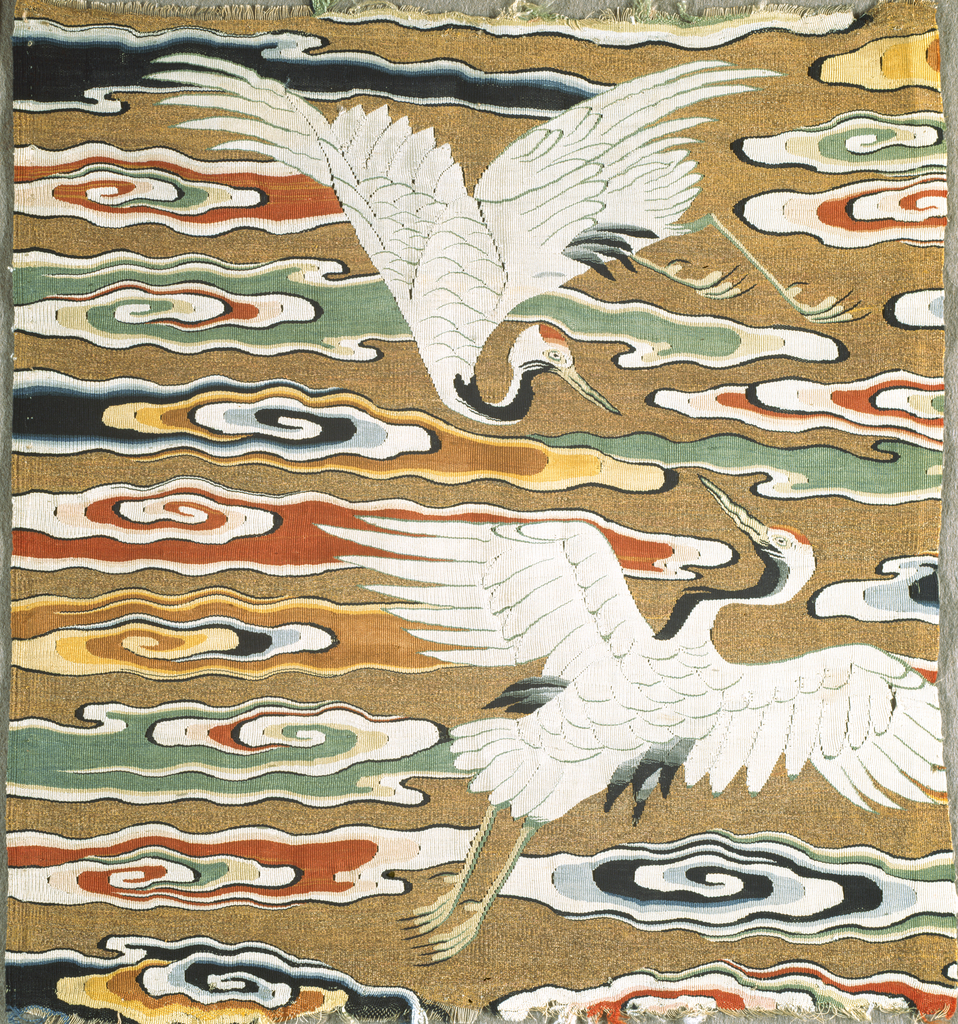Asia Week is in full swing!
An annual event in New York City, Asia Week began last Friday, March 15th and runs through this Saturday, March 23rd . In an effort to support and celebrate Asian art both in the city and across the nation, galleries, auction houses, museums and cultural institutions in New York host sales, exhibitions, lectures and other special events.
In keeping with this citywide focus on the long-standing influence of Asian art is today’s object, a Chinese rank badge. Both visually striking and culturally significant, this badge is dated to 1391-1527, situating it within the Ming Dynasty, which was extant from 1398-1644. Though the tradition is said to have originated even earlier, it was during this time when the practice of identifying the ranks of Chinese government and military officials with badges worn on the front and back of robes was standardized. These badges were conferred only by the emperor and earned through the rigorous study of Confucian classics. Individuals could only progress through the ranks by examination making each successive rank all the more noble.[1]
The symbolism woven into this badge tells us it would have been worn by a civilian of the first and highest rank. Traditionally there are two sets of ranks: military and civilian. Military ranks are represented by mythological and real animals symbolizing courage, while the nine civilian ranks are represented by birds, which in Chinese culture are traditionally aligned with literary enlightenment and scholarship.[2] This badge features a pair of cranes with their wings spread, floating across a metallic golden sky punctuated with multicolored, modeled clouds of various shades of green, blue, red and yellow. In both the Ming and the Qing (1644-1911) Dynasties, the first rank was signaled by the crane or xianhe, identifiable here by their red crowns. The crane came to symbolize immortality, longevity and wisdom because Chinese mythology held that they could live thousands of years. Cranes also have physical attributes associated with longevity such as white feathers, and long tails and necks. In addition to alluding to heaven, the swirling clouds that serve as a background of the badge are also symbols of longevity.[3] This auspicious imagery makes the badge an apt marker for a high-ranking scholar and civil official.
The theme of longevity recurs in Chinese culture and art, as well as in other Asian cultures, signaling a shared reverence for wisdom and pursuit of a long, fruitful life. This reverence, as well as the longevity of Asian art traditions themselves, lives on thanks to Asia Week New York. Check out the rest of this year’s Asia Week events here!
[1] Linda Wigglesworth, The Badge of Rank (London, 1990): p. 3.
[2] Linda Wigglesworth, The Badge of Rank (London, 1990): p. 3.
Dr. Young Yang Chung, The Art of Oriental Embroidery: History, Aesthetic, and Techniques (New York: Charles Scribner’s Sons, 1979): p. 109-10.
[3] Valerie Garrett, Mandarin Squares: Mandarins and Their Insignia (New York: Oxford University Press, 1995): p. 41 & 47.
